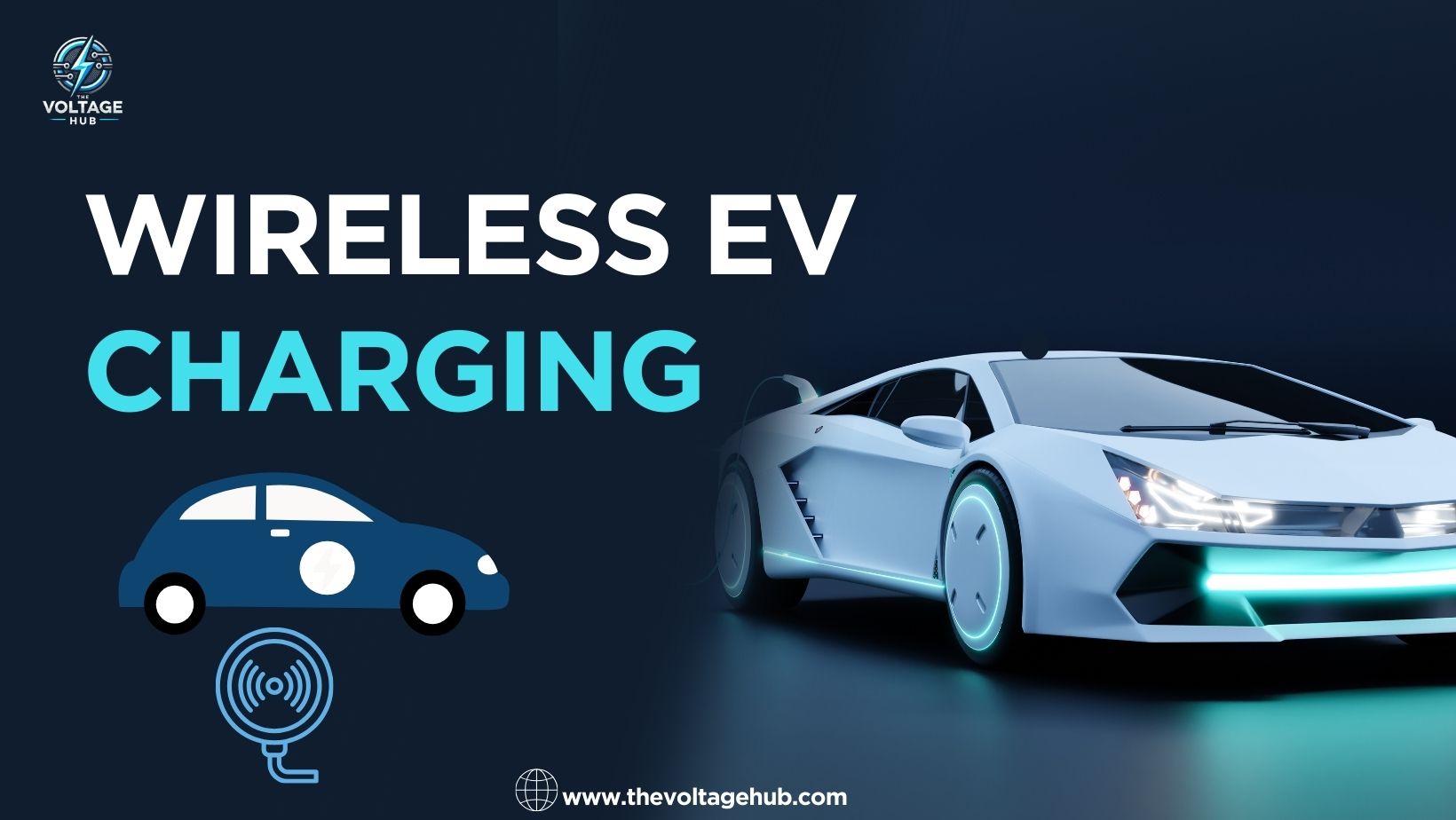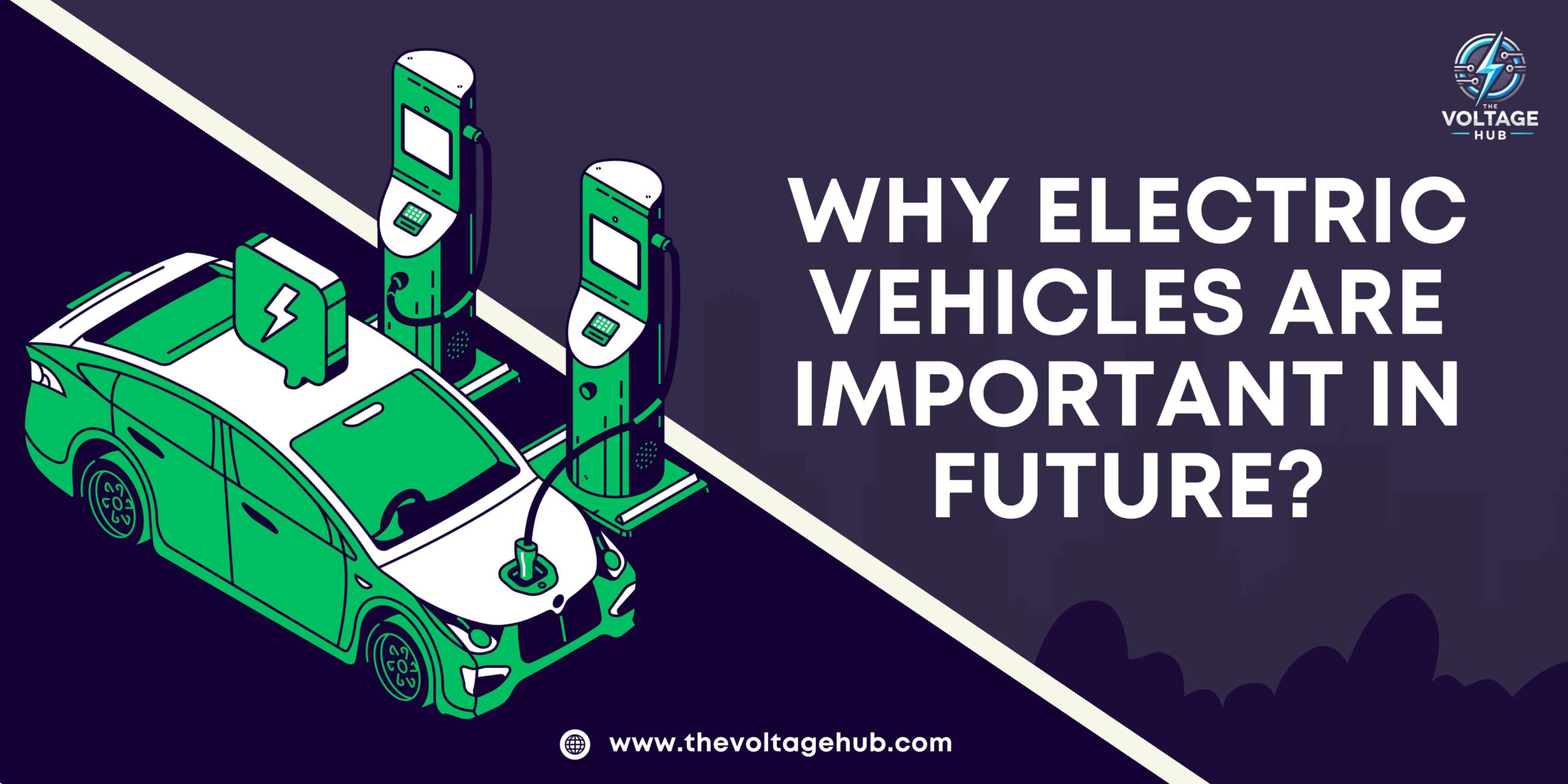Table Of Content
Imagine this: you pull your EV into your driveway or a parking spot, and boom—it starts charging automatically. No plugs, no wires, no messing around. Feels like magic, right? Well, it’s not magic; it’s wireless electric vehicle charging market—a game-changing innovation that’s turning heads in the EV world.
So, what’s the deal with wireless charging? How does it even work? Is it the real deal or just another tech buzzword? Let’s dive in and find out why this might be the coolest thing to happen to EVs since, well, EVs.
Is Wireless Charging Possible for EVs?
Yes, it’s not only possible but already in action! Wireless EV charging uses inductive technology to transfer energy from a charging pad to the vehicle’s battery—without any physical connection. Think of it like charging your smartphone on a wireless dock, but on a much larger scale.
This technology is set to redefine convenience for EV owners. No more searching for cables, struggling in bad weather, or worrying about plug compatibility. Just park, and let your car charge itself. Lets understand the what is wireless charging in brief.
What is Wireless Charging for Electric Vehicle?
Okay, let’s break it down: wireless charging means your EV charges without plugging in. Instead of connecting a cable, you just park over a charging pad, and energy transfers wirelessly to your car’s battery.
Think of it like your wireless phone charger—but scaled up for cars. This technology isn’t just about convenience; it’s about making life easier, safer, and a whole lot cooler for EV owners.
How Does Wireless EV Charging Work?
Wireless EV charging operates through a technology known as inductive charging. Here’s how it breaks down:
Wireless EV charging operates using a groundbreaking technology known as inductive charging, which enables energy transfer without the need for physical connections. This process is rooted in the principles of electromagnetism, seamlessly powering electric vehicles through a series of well-coordinated steps
First, a power source supplies electricity to a charging pad that is embedded in the ground or mounted on the surface. This charging pad houses a coil that serves as the foundation for the next step. When electricity flows into this pad, the coil generates an electromagnetic field, a crucial component that facilitates energy transfer.
Next, the vehicle plays its part in the process. An EV equipped with a receiver coil, typically installed under its chassis, comes into proximity with the charging pad. The receiver coil is designed to capture the electromagnetic energy emitted by the charging pad. Once the energy is received, it undergoes a transformation. The receiver converts the electromagnetic energy into electricity, which is then directed to the car’s battery for storage and use.
To ensure this system operates efficiently, advanced automation technologies come into play. These systems help the vehicle align perfectly with the charging pad, optimizing the energy transfer and reducing potential energy loss. Some setups are even equipped with sensors and feedback mechanisms to guarantee seamless communication between the vehicle and the charging pad.
In essence, wireless EV charging simplifies the charging process, eliminates the hassle of cables, and integrates cutting-edge automation to make the experience effortless and reliable for EV owners.
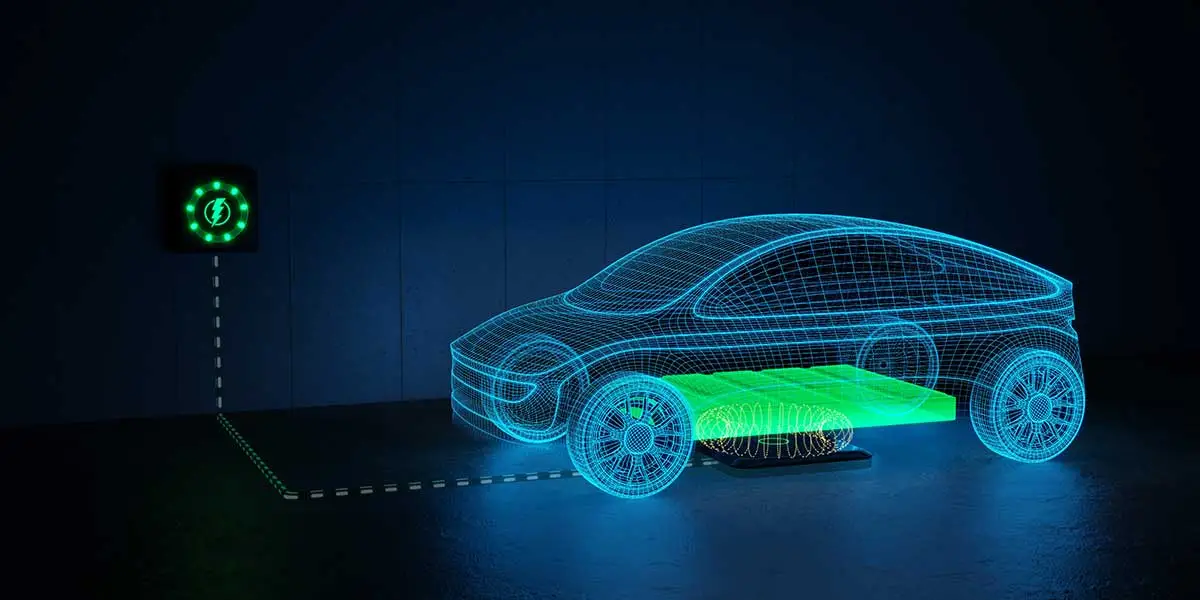
Wireless EV Charging Benefits
Convenience and Ease of Use : No Need for Cables: One of the most significant advantages of wireless EV charging is the elimination of cables. EV owners no longer have to worry about plugging in and unplugging the vehicle each time they need to charge. Automatic Charging: Some systems offer automatic alignment, where the vehicle can be parked over the charging pad, and the process begins automatically, making it as easy as parking your car.
Reduced Wear and Tear : No Physical Connections: Since there are no physical connectors involved, the wear and tear that can occur with traditional plug-in chargers is significantly reduced. This means less maintenance and longer-lasting charging equipment.
Enhanced Safety Features : Fewer Hazards: Wireless charging minimizes the risk of electric shock or accidents associated with physical cables. There’s also less chance of the cables getting damaged by external factors such as weather conditions or wear over time.
Smart Charging: Many wireless charging systems incorporate safety features like temperature regulation and power cut-off to prevent overcharging or overheating, ensuring the safety of both the vehicle and the user
Aesthetic and Functional Appeal : Cleaner Setup: Without the need for unsightly wires and plugs, wireless charging systems contribute to a more aesthetic and clutter-free environment. This is especially beneficial for residential setups, where the charging station can be integrated into the driveway or garage seamlessly
Wireless EV Charging Options
Static Wireless Charging :
Inductive charging is the most widely used form of wireless EV charging. It involves the transfer of energy through an electromagnetic field between two coils: a transmitter coil embedded in a charging pad on the ground and a receiver coil installed in the EV.
How It Works:
- Transmitter Coil: Positioned in the charging pad, it generates an electromagnetic field when powered.
- Receiver Coil: Installed in the vehicle, it receives the electromagnetic energy and converts it into usable electricity to charge the vehicle’s battery.
Dynamic Wireless Charging
Dynamic wireless charging, or in-motion charging, enables EVs to charge while driving. This system uses embedded coils in the road or track that communicate with a receiver coil installed in the vehicle. This system aims to eliminate the need for stopping at charging stations altogether.
How It Works:
- Embedded Road Coils: Power is transmitted wirelessly through electromagnetic fields created by road-installed coils.
- Receiver Coil in EV: The vehicle receives power while in motion, continuously charging its battery without needing to stop.
Resonant Inductive Coupling Charging (RIC)
Resonant inductive coupling charging (RIC) is an advanced form of inductive charging that operates at higher efficiency levels. It uses resonant magnetic fields to transfer energy more effectively between the transmitter and receiver coils.
How It Works:
- Resonant Coils: Both the transmitter and receiver coils are tuned to resonate at the same frequency. This resonance improves the efficiency of power transfer over a larger distance.
- Energy Transfer: The energy is transferred through the resonant magnetic field, reducing losses and increasing efficiency.
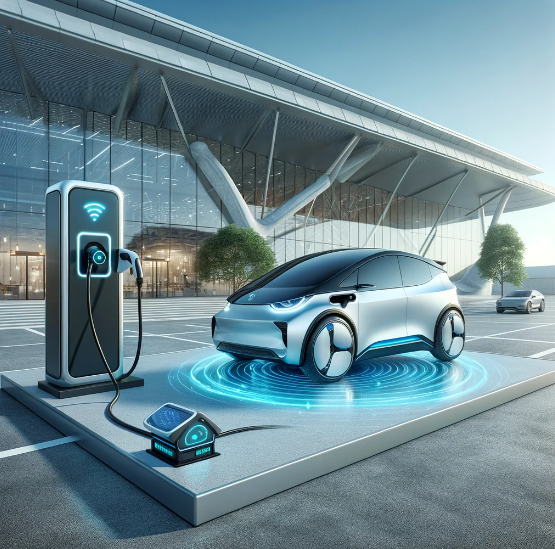
The U.S. AND INDIA Market
With the rise of electric vehicles (EVs), wireless charging is emerging as a convenient and innovative solution. However, it comes with a higher initial cost compared to traditional charging systems. Here’s a breakdown of the costs for wireless EV charging infrastructure in India and globally.
1. Initial Setup Costs :
India: The cost of a wireless charging pad ranges from ₹3 lakh to ₹7 lakh, with installation adding another ₹1 lakh to ₹3 lakh.
USA/Europe: Charging pad costs range from $5,000 to $15,000, while installation can cost $3,000 to $7,000.
2. Maintenance Costs :
India: Annual maintenance costs can be between ₹50,000 and ₹1 lakh.
USA/Europe: Maintenance costs range from $500 to $1,000 per year.
3. . Energy Costs :
Energy consumption varies, with India paying around ₹6-₹8 per kWh, and the US paying $0.12 to $0.25 per kWh.
NOTE :Countries like South Korea, Germany, and the USA are leading the way with pilot wireless charging projects, with costs expected to decrease as the technology scales.
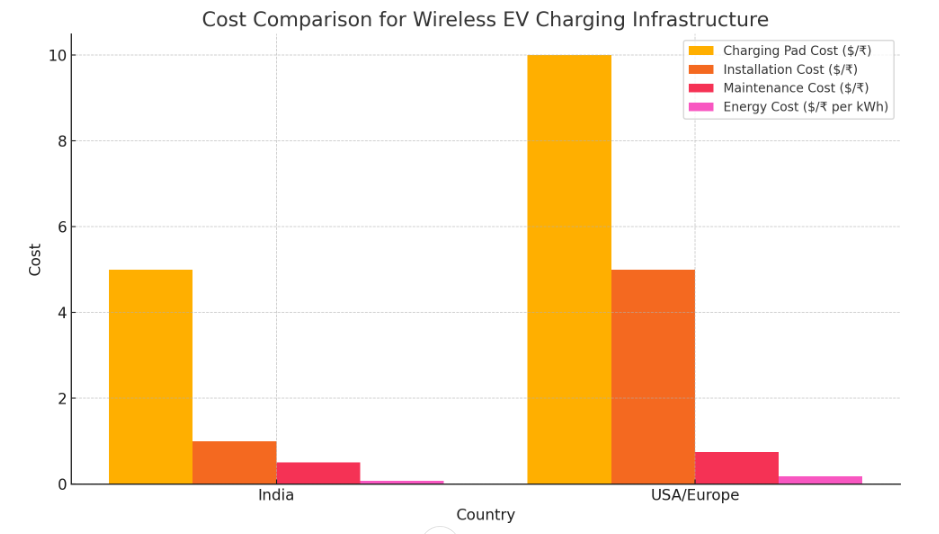
Major Players in the EV Wireless Charging Industry
Continental AG
Continental AG, a well-known global automotive supplier, has been at the forefront of developing wireless charging solutions for electric vehicles. The company focuses on enhancing charging convenience through its inductive charging systems, which aim to provide a contactless experience for EV owners.
Continental AG is working on high-power wireless charging systems with a focus on seamless integration into urban infrastructure. The company has partnered with automotive manufacturers to develop next-generation inductive charging technology, aiming to reduce the charging time while maintaining high efficiency.
Daihen Corporation
Daihen Corporation, a leading manufacturer of industrial equipment, is actively working on wireless charging systems for electric vehicles. The company has been involved in research and development to provide efficient and reliable inductive charging solutions to accelerate the adoption of electric mobility.
Daihen Corporation has developed advanced wireless charging systems for both commercial and residential applications. The company focuses on integrating wireless power transfer (WPT) technology into the EV ecosystem, with an emphasis on reducing charging times and improving energy transfer efficiency.
DelachauxGroup
The DelachauxGroup, through its subsidiary Electromagnetic Solutions, is contributing to the development of wireless charging solutions for electric vehicles. With a long history in electrical infrastructure, the company is leveraging its expertise to enable the widespread deployment of wireless charging technology.
Delachaux Group is focusing on high-efficiency wireless charging technology that integrates seamlessly with existing infrastructure. The company is also investing in research to improve the standardization of wireless charging protocols, ensuring compatibility across various EV models and charging stations
Electreon, Inc.
Electreon is a trailblazer in the EV wireless charging industry, known for its innovative solutions for dynamic wireless power transfer. The company specializes in developing charging infrastructure that allows electric vehicles to charge while in motion, making it a unique player in the wireless charging space.
Electreon has developed a technology that enables wireless charging of EVs on public roads through embedded infrastructure, such as roads with integrated wireless charging pads. The company’s solutions are designed to reduce reliance on stationary charging stations, creating a more flexible and efficient EV charging ecosystem.
Conclusion:
Wireless EV charging systems offer a transformative solution for the future of electric mobility. Each system, whether static or dynamic, comes with unique advantages and challenges. As technology continues to evolve, these systems are expected to play a crucial role in making electric vehicle charging more convenient, efficient, and sustainable. With continued investment and advancements in infrastructure, wireless charging will likely become a widespread feature of urban and rural areas alike, bringing us closer to a cleaner, greener, and more connected world.
Interested in learning more about Electric Vehicles (EVs)? Read and explore more on the types, challenges, and benefits of Electric Vehicles shaping the future of transportation!
FAQs
Is wireless charging possible for EVs?
Yes, wireless charging for electric vehicles (EVs) is possible using inductive charging technology.
Is wireless EV charging efficient?
Wireless EV charging is less efficient compared to wired charging, with efficiency typically ranging between 80-90%.
Do any cars have wireless charging?
Yes, some EVs, like the BMW 530e, and certain models from Kia and Hyundai, offer wireless charging features.
Can we install wireless charging in a car?
Yes, wireless charging systems can be retrofitted into some EVs, though it requires specialized hardware installation.
Is wireless charging OK for the battery?
Yes, wireless charging is generally safe for EV batteries when using certified systems, though it may generate more heat than wired charging, which can affect long-term battery health if not managed properly

